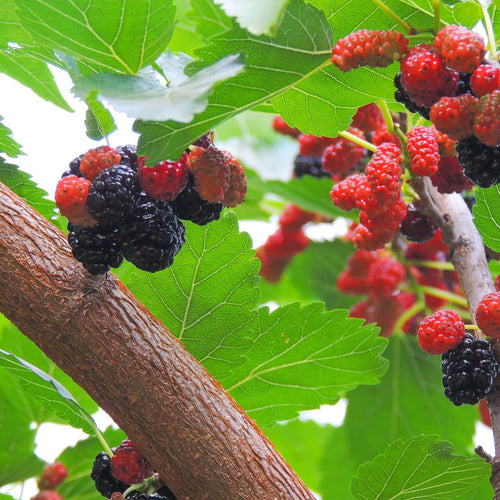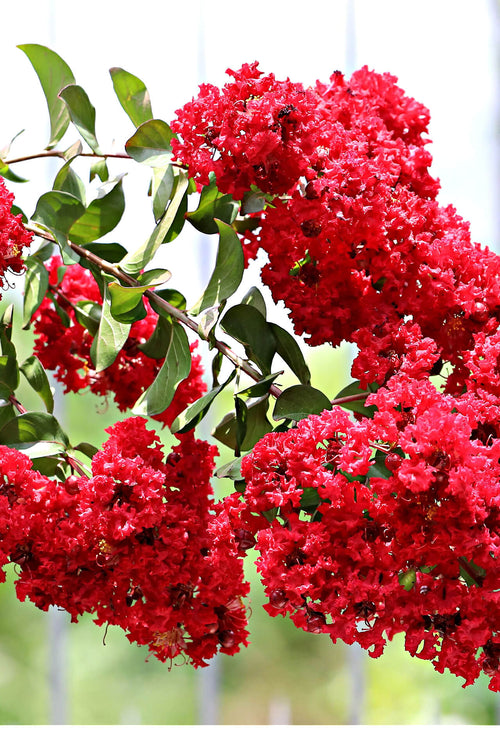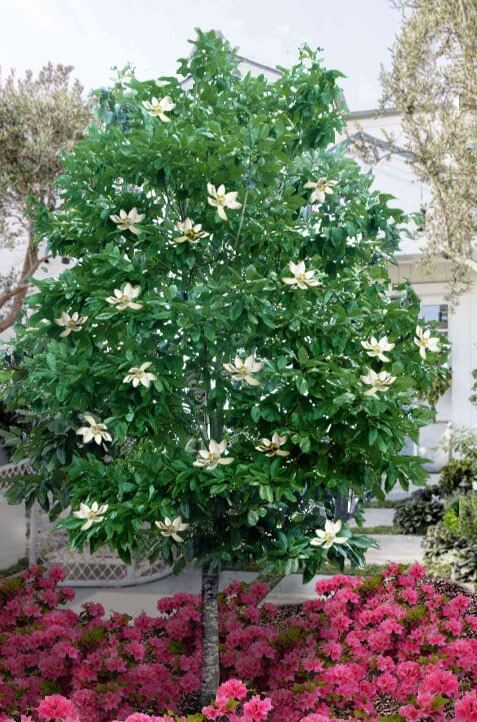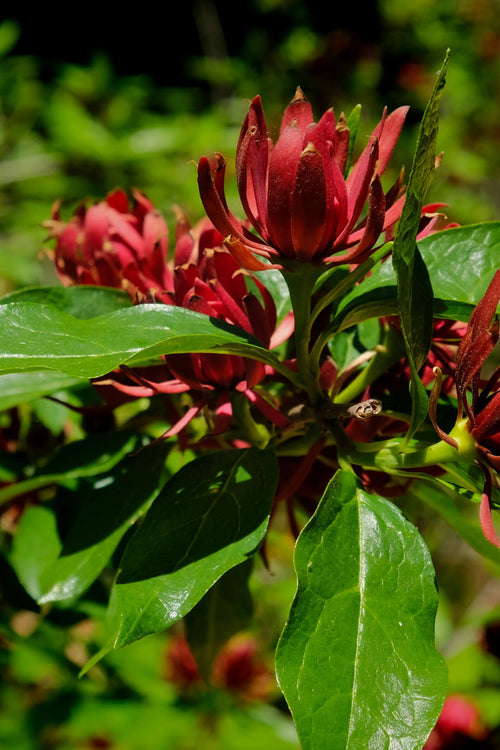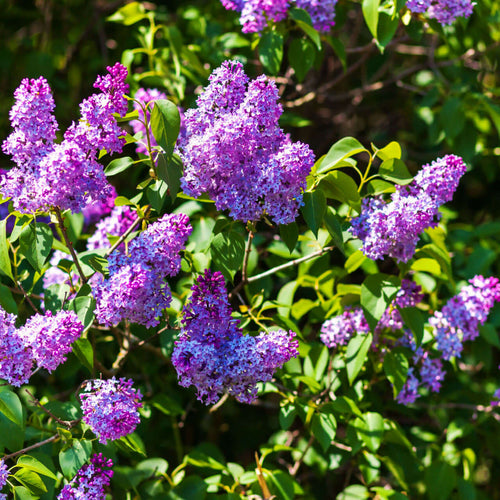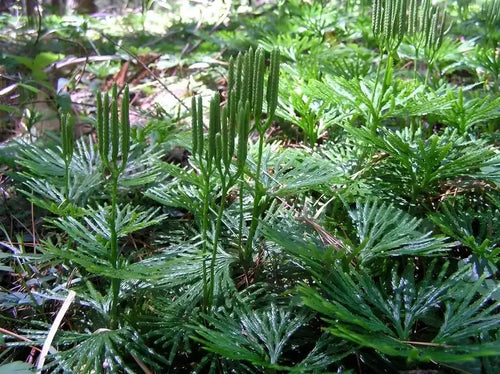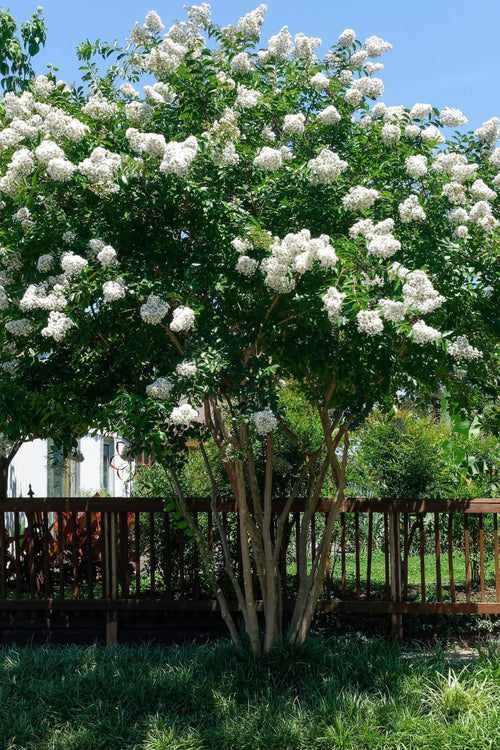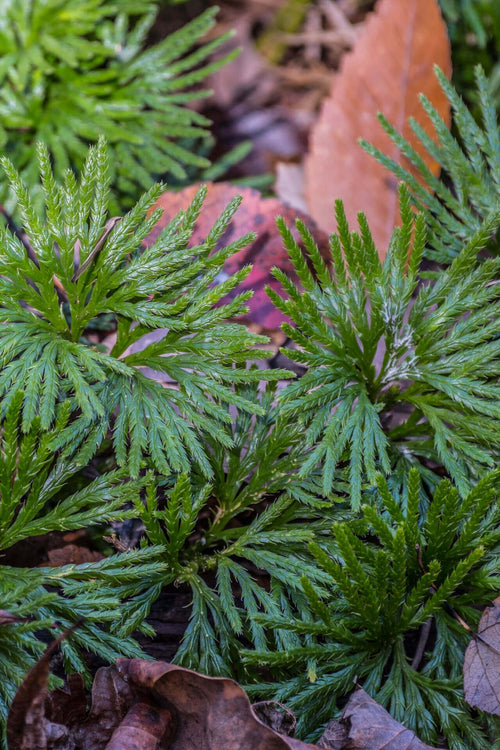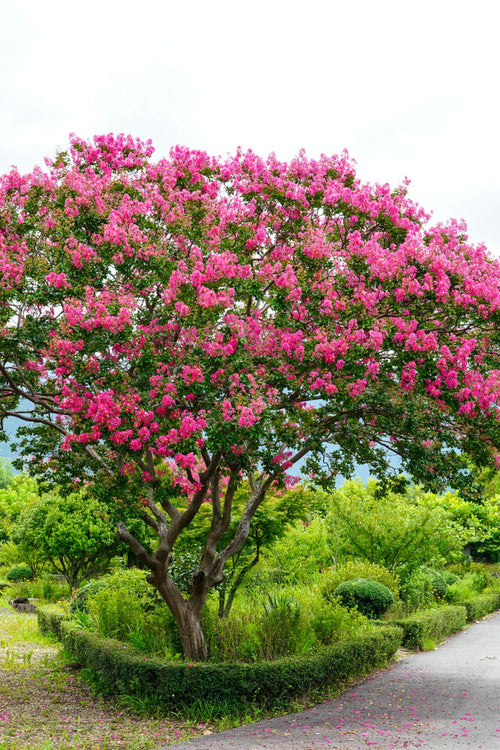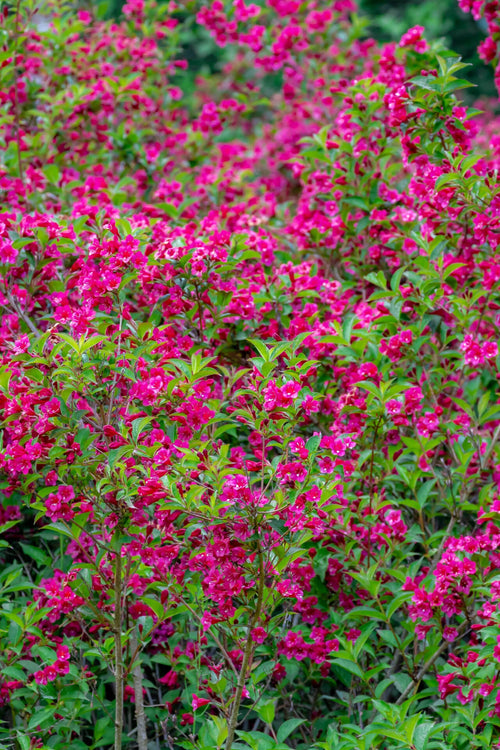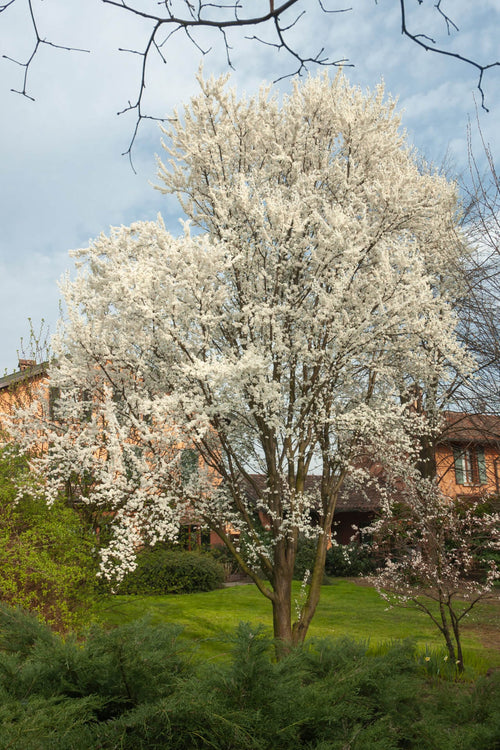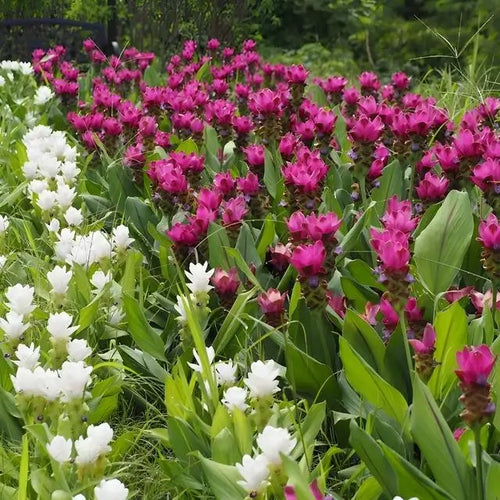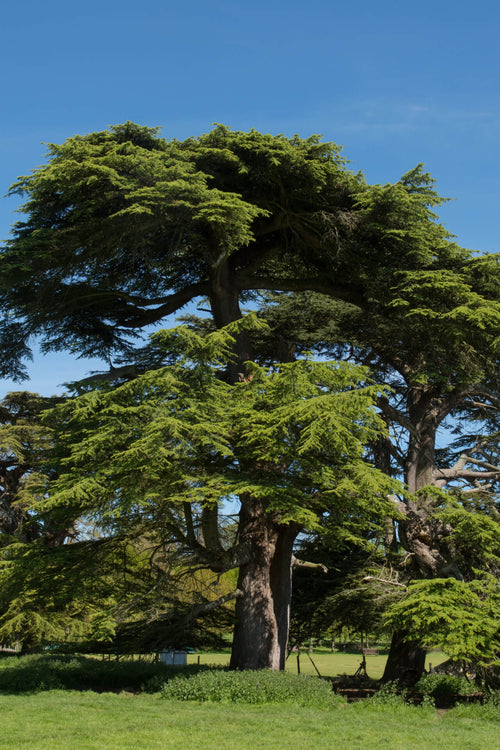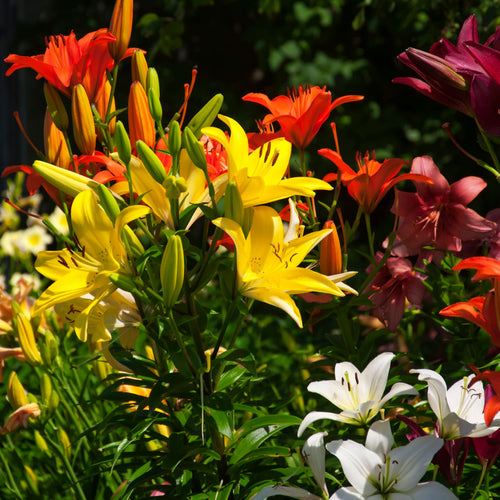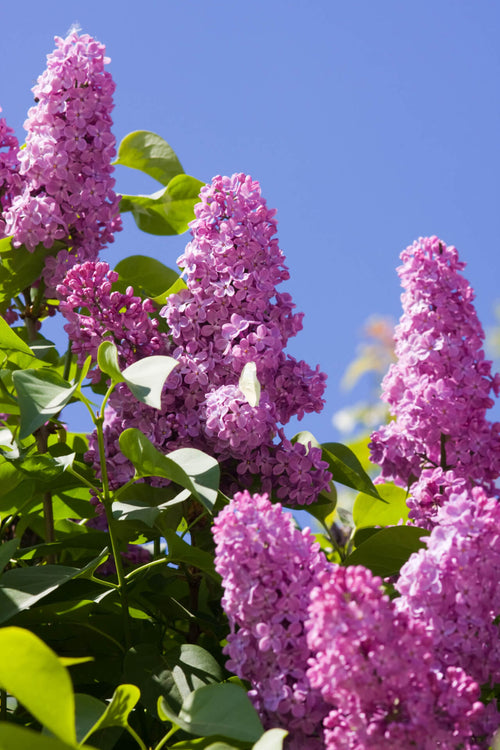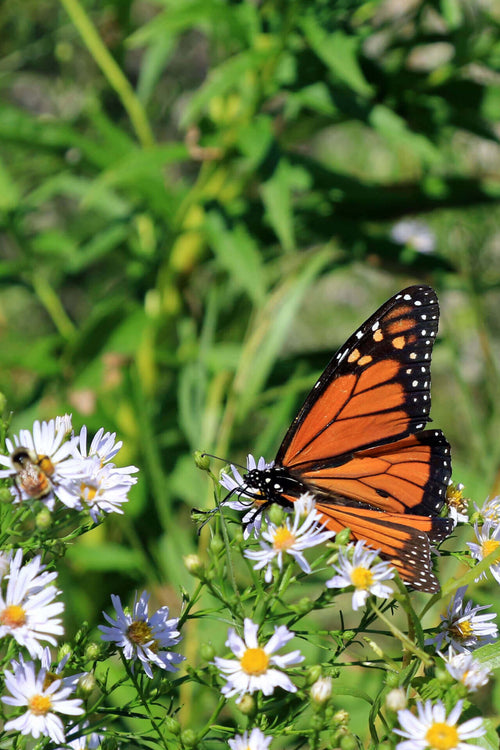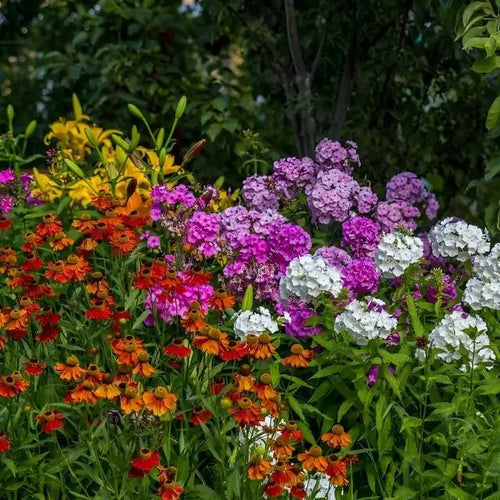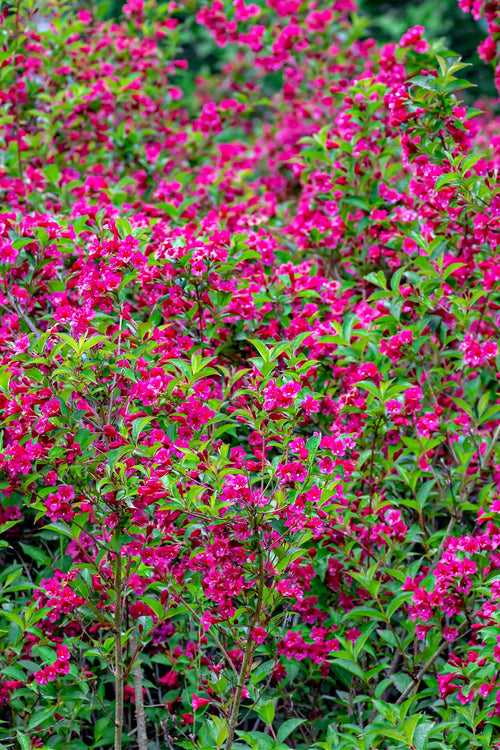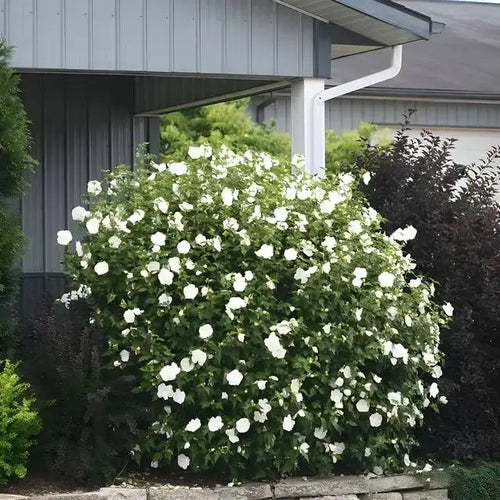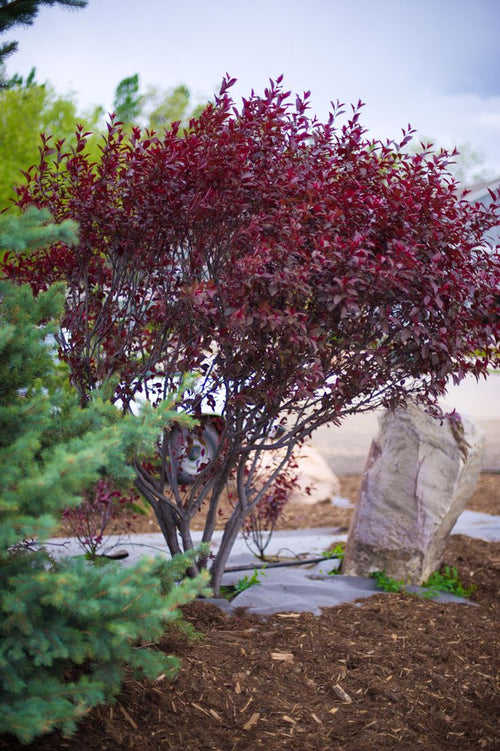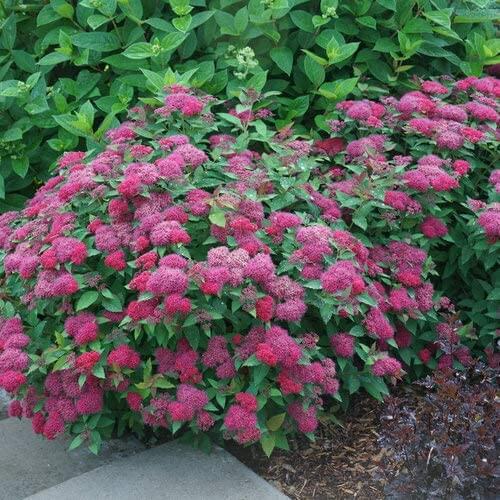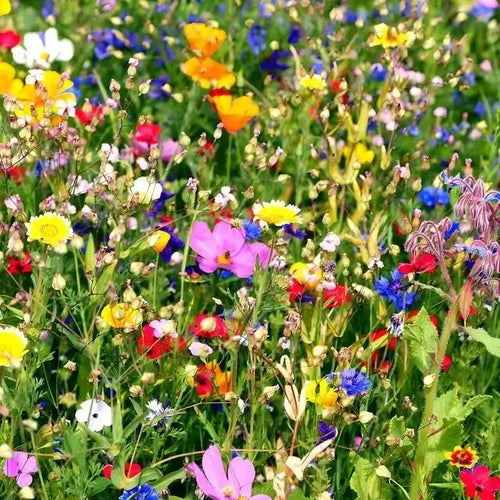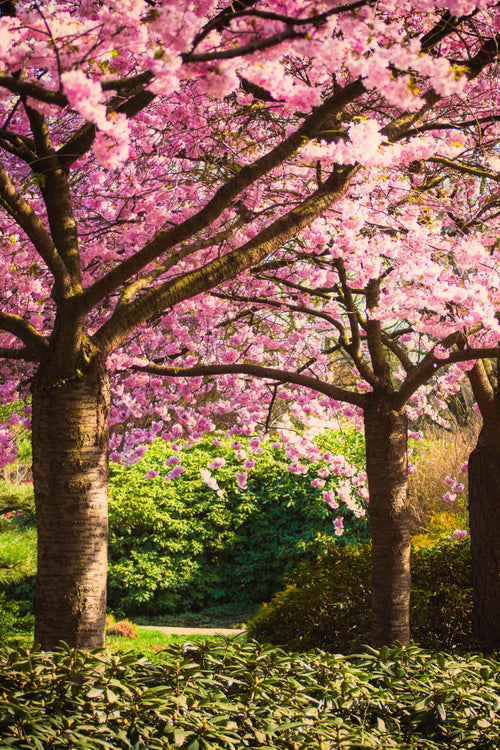Perennial Grab Bag - 25 Plants
This carefully curated assortment of perennial plants is designed to add a stunning array of colors, textures, and fragrances to your outdoor space. With our Perennial Grab Bag, you'll receive a delightful assortment of 25 plants, each chosen for their exceptional beauty and hardiness. From vibrant flowers to lush foliage, this grab bag offers an incredible variety to keep your garden thriving throughout the seasons.
PLEASE NOTE THAT THESE ARE A COLLECTION OF PLANTS, NOT SPECIFIC PLANT TYPES. WE CHOOSE TYPES THAT WORK BEST FOR YOUR ZONE ACCORDING TO YOUR ZIP CODE
What makes our Perennial Grab Bag truly special is the element of surprise it brings
While we can't reveal the exact plants included in each bag (it's part of the excitement!), we can guarantee that you'll receive a diverse mix of perennials carefully selected to complement one another. This mix might include flowers such as daisies, roses, lilies, and tulips, as well as ornamental grasses, ferns, and aromatic herbs. The possibilities are endless!
One of the many advantages of perennials is their low-maintenance nature. Once planted, they establish robust root systems that enable them to survive and flourish with minimal effort on your part. As a result, you'll spend less time worrying about your garden and more time enjoying its beauty. The Perennial Grab Bag is a fantastic option for busy individuals who want a vibrant green without the hassle of constant upkeep.
These 25 plants offer incredible versatility.
You can create eye-catching flower beds, charming borders, or a stunning container garden. Imagine stepping outside and being greeted by a sea of colorful blooms, with butterflies and hummingbirds fluttering from plant to plant. The Perennial Grab Bag is your ticket to a picturesque and inviting outdoor space.
As nature lovers ourselves, we understand the importance of quality plants. We source our perennials from trusted nurseries and growers, ensuring each plant is healthy, robust, and ready to thrive in your garden. We take great care in selecting varieties suitable for different climates and growing conditions so you can enjoy the beauty of perennials no matter where you live.When you order the Perennial Grab Bag - 25 Plants, you're not just purchasing a collection of plants but embarking on a journey of discovery and transformation. Watch as your garden evolves into a breathtaking tapestry of colors and textures, attracting pollinators and providing a sanctuary for beneficial insects. Whether seeking a tranquil retreat or a vibrant showcase, these perennials will exceed your expectations.Order your Perennial Grab Bag today and get ready to be amazed by the magic that unfolds in your outdoor space. Unleash your inner gardener and let the Perennial Grab Bag - 25 Plants be your guide to a flourishing and captivating garden!The Perennial Grab Bag - 25 Plants offers many benefits for any gardener, whether you're a seasoned horticulturist or a beginner looking to create a beautiful outdoor space. Here are ten benefits that make this product a fantastic addition to your garden:1. Variety and Surprise: With the Perennial Grab Bag, you'll receive 25 different perennial plants, offering an exciting element of surprise. Each bag is carefully curated to provide a diverse mix of flowers, foliage, and herbs. The variety ensures a visually stunning and dynamic garden that evolves throughout the seasons.2. Continuous Blooms: Perennials are known for their ability to bloom year after year, unlike annuals, which need to be replanted every season. By incorporating these plants into your garden, you'll enjoy a continuous display of vibrant colors and beautiful flowers that return each year, enhancing the beauty of your outdoor space.3. Low Maintenance: Once established, these plants require less watering, pruning, and fertilization than annuals. The Perennial Grab Bag simplifies your gardening routine, allowing you to enjoy your garden without constant upkeep.4. Cost-Effective: Investing in a Perennial Grab Bag is a cost-effective way to create a stunning garden. Perennial plants provide long-term value as they return year after year, eliminating the need to repurchase new plants annually. By selecting 25 plants in one grab bag, you save money compared to purchasing individual perennials.5. Longevity and Durability: Perennials are known for their longevity and durability. These plants have robust root systems that withstand harsh weather conditions, including frost, heat, and drought. Incorporating perennials from the grab bag into your garden gives you a resilient and long-lasting landscape that thrives for years.6. Wildlife Attraction: Perennials are magnets for wildlife, including butterflies, bees, and hummingbirds. Their vibrant blooms and nectar-rich flowers provide a valuable food source and habitat for pollinators and beneficial insects. By planting the Perennial Grab Bag, you'll create a haven for these essential creatures, fostering biodiversity in your garden.7. Versatility: The Perennial Grab Bag offers immense versatility in garden design. With 25 different plants, you can create beautiful flower beds, borders, or containers that suit your style and space. The diverse mix of perennials allows you to experiment with various color combinations, textures, and heights, resulting in a customized and visually appealing garden.8. Educational Experience: For novice gardeners or those interested in learning more about plants, the Perennial Grab Bag provides an educational experience. As you plant and care for different perennials, you'll develop a deeper understanding of their growth habits, water requirements, and maintenance needs. It's a hands-on opportunity to expand your gardening knowledge.9. Environmental Benefits: Perennials have numerous environmental benefits. They also require less water than annuals, reducing water consumption. Choosing the Perennial Grab Bag contributes to a more sustainable and eco-friendly gardening approach.10. Year-Round Interest: The Perennial Grab Bag ensures year-round interest in your garden. While some perennials bloom during specific seasons, others provide attractive foliage or interesting seed heads during winter. By carefully selecting a mix of plants, you can create a garden that captivates and delights throughout the year, even when flowers are not blooming.From the excitement of surprise and variety to the low maintenance, cost-effectiveness, and environmental advantages, this grab bag is a gateway to a beautiful and thriving garden. Experience the joy of perennial gardening with this carefully curated assortment of plants that will transform your outdoor space into a haven of color, fragrance, and natural beauty.Here are some tips:1. Watering: Proper watering is crucial for the health of your perennials. At the same time, their water requirements may vary slightly depending on the specific plants in your grab bag, such as thorough watering rather than frequent shallow watering. 2. Mulching: Applying a layer of organic mulch around your perennial plants offers numerous benefits. Mulch helps retain soil moisture, suppresses weeds, and moderates soil temperature.3. Fertilizing: Perennial plants generally benefit from an annual application of slow-release fertilizer in early spring or early fall. Choose a balanced fertilizer designed especially for perennials, and adhere to the application rates recommended on the package. Avoid overfertilizing plants to prevent excessive foliage development at the price of flower production.4. Deadheading and Pruning: Regular deadheading, the removal of spent flowers, promotes continuous blooming and prevents the plants from expending energy on seed production. Additionally, pruning your perennials helps maintain their shape, remove damaged or diseased foliage, and rejuvenate the plants. 5. Dividing: Some perennial plants in your grab bag may become overcrowded or outgrow their allotted space over time. Dividing these plants helps rejuvenate them and create new plants for your garden or to share with others. Dividing is typically done in early spring or fall when the plants are dormant. Follow plant-specific guidelines for the best time and method to divide each variety.6. Pest and Disease Control: Regularly inspect your plants for signs of pests or diseases. Identify any issues early to take appropriate action. Some common problems include aphids, snails, and slugs, while diseases like powdery mildew and leaf spot can affect perennials. 7. Support and Staking: As perennials grow, some may require support to prevent them from flopping or bending under their weight or in windy conditions. Install supports, such as stakes or cages, early in the growing season to provide stability and prevent plant damage. Be gentle when securing the plants to the supports to avoid damaging the stems.8. Winter Protection: Depending on your climate, some perennial plants may benefit from winter protection. Consider using burlap or protective coverings in colder regions to shield delicate plants from frost or snow damage.9. Regular Monitoring: Regularly monitor your perennial plants for signs of stress, nutrient deficiencies, or other issues. Pay attention to changes in foliage color, wilting, or insect infestations. Promptly address any problems to prevent them from spreading and affecting the overall health of your garden.10. Enjoy and Learn: Lastly, take the time to enjoy the beauty and serenity that your Perennial Grab Bag brings to your garden. Observe how different plants grow and interact with each other, and learn about their unique characteristics and requirements. By following these maintenance tips, your Perennial Grab Bag - 25 Plants will thrive, bringing years of beauty and enjoyment to your garden. With proper care, you can create a flourishing landscape that showcases the diversity and resilience of these remarkable perennial plants.
The Perennial Grab Bag is perfect for gardeners of all levels, whether you're a seasoned enthusiast or just starting your gardening journey. Each grab bag is thoughtfully composed to include a mix of perennial plants, ensuring a stunning display of colors, shapes, and sizes throughout the seasons.
When you receive your Perennial Grab Bag, prepare for a pleasant surprise. Inside, you'll find a selection of robust and healthy perennial plants ready to be planted and nurtured in your garden. The grab bag may include many perennial favorites, such as vibrant daylilies, elegant coneflowers, delicate asters, charming daisies, and much more. Each plant is carefully chosen for its exceptional beauty, hardiness, and ability to thrive in various growing conditions.
With the Perennial Grab Bag, you can create a dynamic and ever-changing garden that will delight your senses year after year.
Watch your garden transform with the seasons, showcasing a stunning array of blooms, lush foliage, and unique textures.The Perennial Grab Bag offers aesthetic beauty and brings a host of benefits to your garden. Perennial plants are known for their longevity, returning year after year with minimal maintenance. They establish deep root systems, making them more drought-tolerant and resistant to harsh weather conditions. Once installed, these plants require less watering and are generally more resilient than annuals, ensuring a sustainable and low-maintenance garden.In addition to their longevity, perennial plants such as bees, butterflies, and hummingbirds are also beautiful to pollinators. By incorporating a variety of perennial plants from the grab bag into your garden, you'll create a haven for these essential pollinators, contributing to the overall biodiversity and health of your local ecosystem.
Taking care of the plants in your Perennial Grab Bag is relatively easy
Each plant will have care instructions guiding proper planting depth, spacing, and watering needs. Following these instructions ensures your plants' successful establishment and growth. You'll be rewarded with minimal effort with a thriving garden that offers beauty, joy, and a sense of connection with nature.Add a touch of variety to your landscape; the Perennial Grab Bag is the perfect solution. It offers convenience, diversity, and the opportunity to create a stunning and sustainable garden that will bring you years of enjoyment. Embrace the surprise and beauty of our Perennial Grab Bag and let your garden flourish with an assortment of nature's finest perennial treasures.The perennial grab bag is the finest option for anybody wishing to improve their outdoor area since it provides numerous advantages to gardeners. The Perennial Grab Bag's top 10 benefits are 1. Diverse Plant Selection: To ensure that your garden has a variety of sizes, shapes, and colors, the Perennial Grab Bag offers a wide variety of perennial plants. You'll enjoy a vibrant and ever-changing display with various plant species throughout the seasons.2. Cost-Effective: Purchasing a Perennial Grab Bag is a cost-effective way to expand your garden. Rather than buying individual plants, which can be more expensive, the grab bag offers a more excellent value for your money.3. Easy and Convenient: The Perennial Grab Bag simplifies plant selection. Instead of spending time researching and choosing individual plants, the grab bag provides a ready-made assortment, saving you time and effort. It's convenient for busy gardeners who want to quickly and easily add new plants to their landscape.4. Surprise and Excitement: Opening the Perennial Grab Bag is a delightful experience filled with anticipation and excitement. The element of surprise adds a sense of adventure to your gardening journey. It's a beautiful way to learn about different sorts of plants and broaden your gardening horizons because you never know what kind of plants you'll find inside.5. Design Flexibility: The Perennial Grab Bag offers design flexibility for your garden. You can experiment with different combinations, textures, and heights with various plants. This allows you to create stunning flower beds, borders, or even container gardens that reflect your unique style and vision.6. Continuous Blooms: Perennial plants in the grab bag are carefully selected to display blooms continuously throughout the growing season. From early spring to late fall, you'll enjoy a succession of flowers, ensuring a visually captivating, constantly changing, and evolving garden.7. Low Maintenance: Perennial plants are known for their longevity and low maintenance requirements; the ones in the Perennial Grab Bag are no exception. Once established, these plants require minimal care, making them ideal for gardeners with limited time for gardening activities. With proper planting and primary care, they'll thrive year after year with little intervention.8. Wildlife Attraction: Pollinators like honeybees, butterflies, and hummingbirds favor perennial plants. By planting a diverse range of perennials, you'll attract these beneficial creatures, promoting biodiversity and helping to support a healthy ecosystem.9. Sustainability: Perennial plants are inherently sustainable as they return year after year. By choosing the Perennial Grab Bag, you're making a sustainable gardening choice that reduces the need for frequent replanting. This saves time and money, reduces waste, and minimizes the ecological footprint associated with gardening.10. Educational Opportunity: The Perennial Grab Bag offers an educational opportunity for gardeners of all skill levels. As you explore the assortment of plants, you'll learn about different species, their growth habits, and their care requirements. This hands-on experience can deepen your gardening knowledge and inspire you to expand your horticultural expertise further.In conclusion, the Perennial Grab Bag provides numerous benefits for gardeners, from its diverse plant selection and cost-effectiveness to its convenience, surprise factor, and design flexibility. With continuous blooms, low maintenance requirements, and the ability to attract wildlife, this grab bag offers a sustainable and educational gardening experience. Embrace the joy and rewards of the Perennial Grab Bag and transform your garden into a beautiful oasis of color, life, and natural beauty.Taking care of the plants in your Perennial Grab Bag is essential to ensure their health, longevity, and emotional growth. 1. Proper Planting: Follow the instructions for each plant in your Perennial Grab Bag. Pay attention to the recommended planting depth and spacing requirements. Ensure that the plants are placed in well-prepared soil that is fertile, well-draining, and enriched with organic matter.2. Watering: Water the plants thoroughly after planting to help establish their root systems. Afterward, water the plants regularly, especially during dry periods. The soil must be kept wet, but avoid overwatering since this might result in root rot and other problems. 3. Mulching: Apply a layer of organic mulch around the base of the plants. Mulching helps conserve moisture, regulate soil temperature, and suppress weed growth. Keep the mulch 2-3 inches from the plant stems to prevent moisture-related diseases.4. Fertilization: Feed your Perennial Grab Bag plants in spring with a balanced, slow-release fertilizer. In the spring, fertilize your Perennial Grab Bag plants using a balanced, slow-release fertilizer. As a result, they will receive the nutrients they need for muscular development and a profusion of flowers. To apply fertilizer properly and frequently, follow the directions on the fertilizer container.5. Deadheading: Regularly remove faded flowers by deadheading them. This encourages the plants to redirect their energy into producing new blooms instead of seed production. Deadheading also keeps the plants tidy and prolongs their flowering period.6. Pruning: Prune your perennial plants to maintain their shape, control size, and promote good airflow. Pruning can be done in early spring or after flowering, depending on the plant's growth habit. Use clean and sharp pruning tools to prevent the spread of diseases.7. Stake Support: Some taller or heavy-flowering perennial plants may require support to prevent flopping. Use stakes, cages, or trellises to support and keep the plants upright. Install the support structures early in the growing season to avoid damaging the plant's roots.8. Pest and Disease Control: Inspect your Perennial Grab Bag plants for pests and diseases. Common problems include aphids, slugs, and snails. Remove any diseased or infected plant parts promptly to prevent the spread of diseases.9. Winter Protection: Some perennial plants in your grab bag may require winter protection, especially in colder climates. Consider using burlap or other protective covers for more delicate plants.10. Regular Monitoring: Keep a close eye on your Perennial Grab Bag plants throughout the growing season. Monitor their growth, flowering patterns, and overall health. Look for signs of stress, nutrient deficiencies, or pest and disease problems. Early detection and intervention can help prevent major issues and ensure the continued vitality of your plants.Following these care tips, you can provide the best possible care for your Perennial Grab Bag plants. Remember to tailor your care practices to the specific needs of each plant species and be attentive to any individual requirements they may have. With proper care, your Perennial Grab Bag plants will thrive, bringing beauty and enjoyment to your garden year after year.
Perennial Grab Bag: TN Nursery is pleased to offer a perennial grab bag containing 25 colorful, stylish plants in a high-quality package custom-selected just for you.
Have you ever wondered which species work best in your garden? Our horticulture specialists know what plants work best in your local U.S.D.A. growing zone. When you place an order for a perennial grab bag of 25 plants, we put that knowledge to work on your behalf.
Our perennial grab bags are more than a value price. They are also an excellent value because you get hand-picked, healthy bare-root plants or bulbs customized to suit your local conditions. Our experts will customize your package and dig the plants only after receiving your order and determining the best perennials. Consider TN Nursery your plant shopper!
We will include selections that vary in size and height, color, and blooming season to ensure you have the most-envied garden in the neighborhood.
These are just a few selections. As mentioned, your plants will suit your particular growing zone.
Order Your Perennial Grab Bag of 25 Plants From TN Nursery Today
Are you ready for a delightful surprise? Order your perennial grab bag of 25 plants from TN Nursery today.

